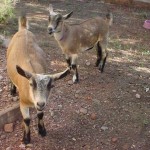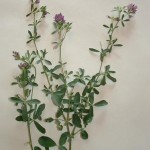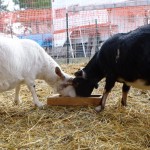by Catherine Haug, Feb 18, 2014 (from March 3, 2013)
(photo, right, from Wikimedia Commons (2))
This is the second in a series on different kinds of dairy goats raised by our members. Read about BrendaLee’s Kinder Goats: Small breed for city lots or farms, or Gayle’s Toggenbergs: Keeping a Family Goat
If you would like to contribute info on your dairy or meat goats, please contact Cat (see our ESP Contact page).
Sheree T. raises Nigerian dwarf goats on her urban homestead for their milk, which she uses in her goat-milk soaps. She would like to start a Nigerian Goat Club in the valley; contact her for more information.


